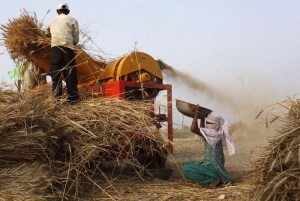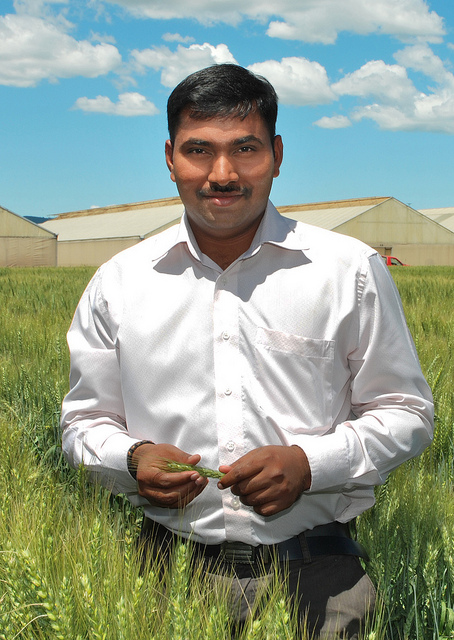
V.K. Mishra and Ramash Chand are professors at Banaras Hindu University in Varanasi, India. Arun Joshi is a wheat breeder at CIMMYT. Any views expressed are their own.
One of the side-effects of the Green Revolution, which began in the 1960s and led to large increases in crop production, has been a change in the cropping patterns in many parts of India.
Farmers have shifted to crops with higher yields. In the Indo-Gangetic plains, for example, rice and wheat have replaced many other crops. This has reduced crop diversity, affected dietary patterns, and led to malnutrition due to a poor supply of proteins, vitamins, iron and zinc.
Wheat is the staple diet in Uttar Pradesh and Bihar. Farmers in those states typically have very small landholdings and consume about 70 per cent of the food they produce. One essential mineral missing from their diet is zinc. A zinc deficiency leads to malfunctioning of several proteins and enzymes, and manifests itself in a variety of diseases, including diarrhea, skin and respiratory disorders.
One way of making up for this kind of deficiency is to provide fortification by adding missing nutrients to food, but this is complex for several reasons, including price increases, the problem of quality control, and the possibility of adulteration.
We tested the genetic bio-fortification technology for enhancing the zinc content in wheat crops under the HarvestPlus project of CIMMYT and the International Center for Tropical Agriculture, funded by the Bill & Melinda Gates Foundation. Bio-fortification is a seed-driven technology that enables crops to extract a higher amount of zinc from the soil and store it in the edible parts.
Through cross-breeding, we produced several thousand wheat genotypes and screened them for high zinc content and high yield. In India, a new variety would be unacceptable if it does not deliver a higher yield than the varieties already under cultivation. We isolated several of these cross-bred varieties that had both high zinc and high yield, and put them through field trials. The existing varieties of wheat crop had 29 parts per million (ppm) of zinc and the varieties we selected had 40 to 45 ppm of zinc.
These field trials were conducted at 70 different locations. Two specific varieties of wheat were then distributed to about 5,000 farmers for cultivation.
The next stage is national trials, which will be conducted by the Indian Council of Agricultural Research (ICAR). The first thing that ICAR does is to put the recommended varieties to disease trial. The ICAR tests take about three years. One of the varieties, BHU-35, has recently cleared the disease-testing stage and is ready to be released in Uttar Pradesh for cultivation, after a few more regulatory clearances.
Seven other varieties are currently undergoing disease testing, and in the next few years, many other zinc-rich wheat crops will be ready for cultivation.
This story was originally published in The Indian Express.

 Nutrition, health and food security
Nutrition, health and food security 
